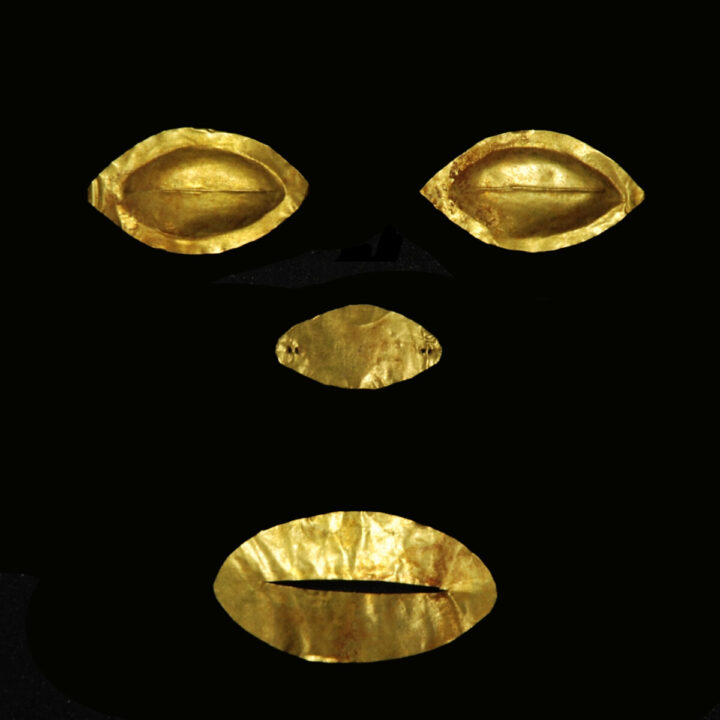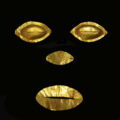Gold Foils for Eyes, Nose and Mouth from the Iron Age Jordan Valley
Culture: Levant
Period: around 700 B.C.
Material: Gold
Dimensions: each 5.8 cm long (eyes); 4.2 cm long (nose); 7 cm long (mouth)
Price: Sold
Ref: 6534
Provenance: US private collection, acquired on 24 July 1998 from Artemis Münzen und Antiquitäten in Munich, Germany. There also sold as originating from the Jordan Valley, but dated to the 3rd century A.D. With a copy of the invoice and customs papers.
Condition: Intact
Description: A belonging ensemble of ancient gold sheets which were placed on the eyes, nose and mouth of a deceased person of high social ranking. The almond-shaped pair of eyes are sculpturally semi-circularly protruding with a fine horizontal central rib, which indicates that the eyes are closed. The nose leaf-shaped with four perforations on the longitudinal ends for suspension. The mouth of a large piece of gold sheet with broad lips and a slit in the middle representing the breath of life. Gold plating for faces of deceased are found since the Mycenaean period around the Mediterranean Sea and later during the pre-Christian period until the 13th century in Southeast Asia. The gold shine around the eyes, nose and ears should keep away the evil spirit to penetrate the bodies of the deceased. At the same time, they should also protect against the profane gaze of the living. And last but not least, the deceased should be able to glide into the other world with wealth and contentment. The style of this ensemble is reminiscent of faces from the Jordan Valley found at Tall Damiyah. A dating to the Iron Age Levant is therefore very likely.




